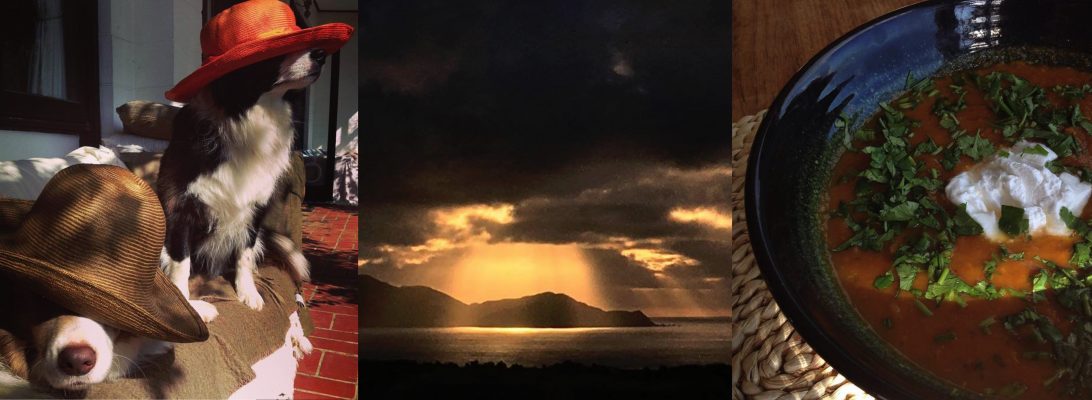Recently, the New York Times published the eulogy Mona Simpson gave for her brother Steve Jobs. It is beautiful, moving and deeply insightful. However it is the last few lines that struck a deep chord with me.
Spoiler alert…If you’d like to read the eulogy first, then click here.
My father, Clive, died of a degenerative neurological disease 8 years ago. I was living in Sydney at the time and a week before he died, my cousin called to say that Dad had been admitted to hospital with an infection and while he could no longer speak or write, he’d managed to make it clear that not only did he not want to be treated with antibiotics, but he was refusing all food and water. He was choosing to go.
Dad had been diagnosed with Lewy Body disease 7 years before his death and during that time had gone from being a proud, fit, immensely self-disciplined (sometimes even a little Victorian) surgeon to a wizened little old man unable to walk, talk or care for himself. Witnessing the deterioration was at times almost intolerable. And watching him die was, I think, quite possibly the most challenging thing I’ve experienced. I spent that last week with him, barely leaving his room. I talked to him, listened to the classical music he loved so much and sat in silence reading the final Harry Potter book as his body shut down.
However there were moments of light. Dad’s sense of humour was dry, gentle and occasionally wicked. His determination formidable. At one point his sister found him taking his own pulse. ‘What are you doing CB?!’ she exclaimed and caught the faintest glimmer of a smile. In the place he’d worked for so many years as a physician, the staff were truly wonderful, nurses who’d assisted him in theatre came and sat for a while softly stroking his hand. At times the room was full of family and friends hooting with laughter, recounting escapades and adventures.
For the last few days of his life my father was mostly unconscious, doped up on morphine, a sallow skinned shell of a man. Occasionally his eyes would half open, but as Harry and Voldemort waged their final battle, Dad did not ‘rage against the dying of the light’ instead he let go, breath by shuddering breath, winding down like an elegant antique watch.
However on the clear, sunny winter’s morning that Dad died, my cousin and I were sitting quietly talking in his room when he suddenly, unexpectedly, sat bolt upright. No longer cloudy, his eyes were clear and bright. The sallow complexion and weighty aura had been replaced by something much clearer and lighter. He sat there, for those last few seconds, and looked not at us, but past us with an expression of wonder.
And yet the thing that really took my breath away and has kept me wondering ever since, was that in his expression I could see recognition. It was as if he was seeing something he recognised and this delighted him beyond measure.
I’ve spoken to doctor friends who have explained his reaction in terms of biochemistry. But those doctor friends weren’t there. I knew my father, I saw what happened and there is absolutely no doubt in my mind that he saw something, someone, somewhere he recognised.
My father was not religious. I don’t recollect hearing him ever hear him say anything remotely spiritual. While he was something of a renaissance man (farmer, artist, sportsman), he was essentially a man of science. He even considered chiropractors and psychologists to be on the fringe. Yet this absolute lack of spiritual belief and practice made his behavior in those final few seconds even more remarkable.
As I read the final line of Mona Simpson’s eulogy for her brother Steve, describing his final few moments of looking past family and saying ‘OH WOW. OH WOW. OH WOW.’ – I said ‘Oh wow’, out loud, too. While I don’t know what Dad saw and I obviously have no idea what Steve saw, I recognise in Mona’s telling of Steve’s final moments, the experience of bearing witness to someone passing into the Wow. Wherever and whatever that may be…
The day after Mona’s eulogy for Steve was published the NZ Herald printed an article entitled ‘Steve Jobs’ odd last words revealed‘ noting that apparently before his death Thomas “Edison emerged from a coma, opened his eyes, looked upwards and said ‘It is very beautiful over there’.
Steve, Thomas, Dad. Maybe not so odd after all.
Wow.
I would love to hear from anyone else who has shared a similar experience.
 As we walked my attention was caught by an old golden retriever ambling slowly down across the sand dunes. I used to work in animal welfare so I know I’m not supposed to anthropomorphize, but it seemed to me that as he did, he was smiling a wistful smile.
As we walked my attention was caught by an old golden retriever ambling slowly down across the sand dunes. I used to work in animal welfare so I know I’m not supposed to anthropomorphize, but it seemed to me that as he did, he was smiling a wistful smile.






